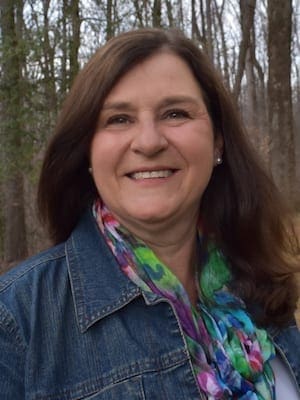When we look at issues of migration and human rights in the Universal Declaration of Human Rights (UDHR), we see that there’s still much work to be done on our part on behalf of immigrants and refugees.
And today, it’s particularly important that we add voices from the faith community to the discussion of immigration and refugee quotas.
In examining the UDHR, there’s an apparent contradiction between the rights of the individual and the rights of a sovereign state, particularly when it comes to entering another country or requesting asylum.
The UDHR was drafted soon after the end of World War II, with recent memories of displaced persons frantically seeking safety while many countries looked the other way.
There was general agreement by member bodies of the United Nations on the right of people to move freely within the borders of their country, to leave or enter one’s own country (Article 13), but the problem lies in who will allow them in.
While strongly supporting a declaration on human rights for all, it seems that no one really wanted to accept the refugees.
There was agreement: Everyone had the right to request asylum from persecution and to enjoy the privileges granted by asylum (Article 14). But sadly, the major countries of the world hoped this would happen “somewhere else.”
Central Americans have long sought refuge in neighboring countries in times of conflict and civil war, and many ended up in the United States.
Civil unrest began in the Cold War days of the 1950s, as Central Americans looked to Cuba for answers to the oppression of the poor by wealthy landowners and oppressive governments.
The primary issue was a question of human rights, particularly for the rural poor and indigenous peoples throughout the area.
Guatemala’s civil war began in 1960 and lasted into 1996; El Salvador’s, 1980 through 1992. Then there was the Nicaraguan Revolution, the Contra War and Mexico’s Dirty War; Honduras became a stronghold for U.S. forces involved in the rest of Central America.
The common theme: a struggle on behalf of the poor, manifested through internal conflict between left-wing student, revolutionary or guerilla groups and right-wing, U.S.-backed governments and military forces.
The problems for everyday people in all of these countries centered on feeding one’s family and staying out of harm’s way, and that included not being recruited into military service for one side or the other, not “being disappeared.” Ultimately, the goal was to survive without being killed.
The church was torn between a historic alliance with the government and the rise in liberation theology and its preference for the poor. But in general, the world looked the other way.
Central America was a mess, and while many refugees fled to neighboring countries, those weren’t much better than their home countries.
The U.S. was a viable option that could be reached by land. But being accepted into another country was an issue, especially the U.S.
Each country has different requirements for asylum, and there’s no obligation for the receiving country to grant asylum to the refugees who petition for it.
People can freely leave their own countries; they just can’t enter another country without that country’s permission. They can request asylum, but it isn’t necessarily granted.
During the civil war, most Salvadoran and Guatemalan refugees who reached the U.S. were detained in immigration detention facilities, where they were strongly encouraged to voluntarily return to their home countries.
They were eventually awarded the opportunity to apply for asylum, but less than 3 percent of Salvadorans and 1 percent of Guatemalan petitioners actually received asylum, compared to more than 30 percent for all other nationalities combined.
This approval rate was unacceptable to many churches and refugee organizations.
In response to the denial of safe haven and the threat of deportation, the Sanctuary movement arose.
And in 1985, American Baptist churches and others filed suit against the U.S. government on behalf of the Salvadoran and Guatemalan refugees, a landmark case that was finally settled in favor of many of those who had been denied asylum.
Central America was forever changed by decades of violence and civil war, and today faces a new threat from gang violence. The flow of desperate people continues, with no place willing to accept them.
Mexico is a significant stumbling block in Central American migration north, and those lucky enough to reach the U.S. border are often caught and held in Immigration and Customs Enforcement (ICE) detention facilities before being returned.
The asylum process is long, expensive and complicated, and meeting the requirements is difficult.
Baptists are once again at the forefront of defending and supporting basic issues of human rights for immigrants and refugees as they seek safety and security – advocating not only for the right to leave one’s country, but also to be received into the U.S. as a refugee or asylee.
Please join the continued struggle for immigration reform, solutions for DREAMers and reasonable refugee quotas. It’s time we stop looking the other way.
“For I was a stranger, and you welcomed me,” Jesus says.
Sue Smith and her husband, Greg, are Cooperative Baptist Fellowship field personnel who work with LUCHA Ministries in Fredericksburg, Virginia. Her writings can also be found on LUCHA’s blog, LUCHA Stories. You can follow her on Twitter @nuttsmith1.
Editor’s note: This article is part of a series for Human Rights Day 2017 (Dec. 10). Previous articles in the series are:
Series Examines Need to Push for Human Rights for All
Why Baptists Should Be Advocates for Human Rights
10 Ways You Can Put a Dent in Human Trafficking
Cooperative Baptist Fellowship field personnel working with LUCHA Ministries in Fredericksburg, Virginia. Sue and her husband, Greg, are also part of CBF’s Advocacy Action Team for Immigrants and Refugees.

